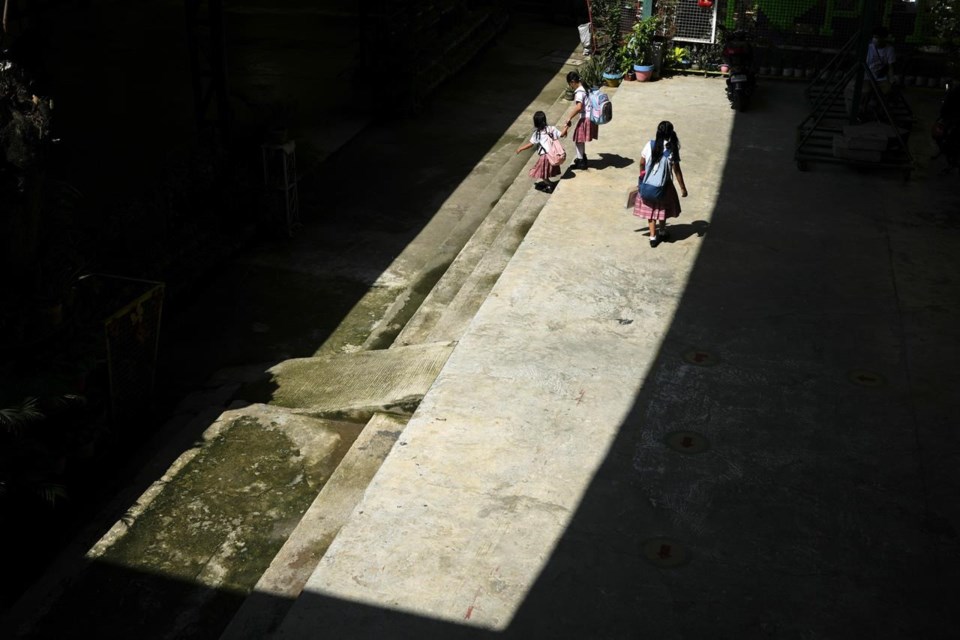MANILA, Philippines (AP) — Millions of students trooped back to public schools across the Philippines on Wednesday as the government enforced the mandatory resumption of in-person classes after more than two years of coronavirus pandemic lockdowns.
Daunting problems hounded the reopening of classes in grade and high schools in several cities and provinces — primarily the extensive damage and flooding caused by Tropical Storm Nalgae, which blew out of the archipelago on Sunday. The storm left more than 130 people dead and a trail of destruction, including damaged school buildings.
Shortages in teachers and classrooms have also been a longstanding problem.
President Ferdinand Marcos Jr. has taken steps to fully reopen the economy, which plunged in 2020 to its worst recession since World War II after his predecessor shut down schools, workplaces and public transport to combat spiking coronavirus infections in what would become one of the world's longest lockdowns.
Marcos Jr. has lifted the mandatory requirement for people to wear face masks in public areas and indoors.
Nearly 29 million students enrolled for the school year, including in privately owned schools, which can decide whether to resume in-person classes or maintain a mix of face-to-face or online classes each week.
Many schools resumed in-person classes in August at the start of a transition period to normal classes. The prolonged school closures had sparked fears that literacy rates among Filipino children — already at alarming levels before the pandemic — could worsen.
A World Bank study last year showed about nine out of 10 children in the Philippines were suffering from “learning poverty,” or the inability of children by age 10 to read and understand a simple story.
The Associated Press



